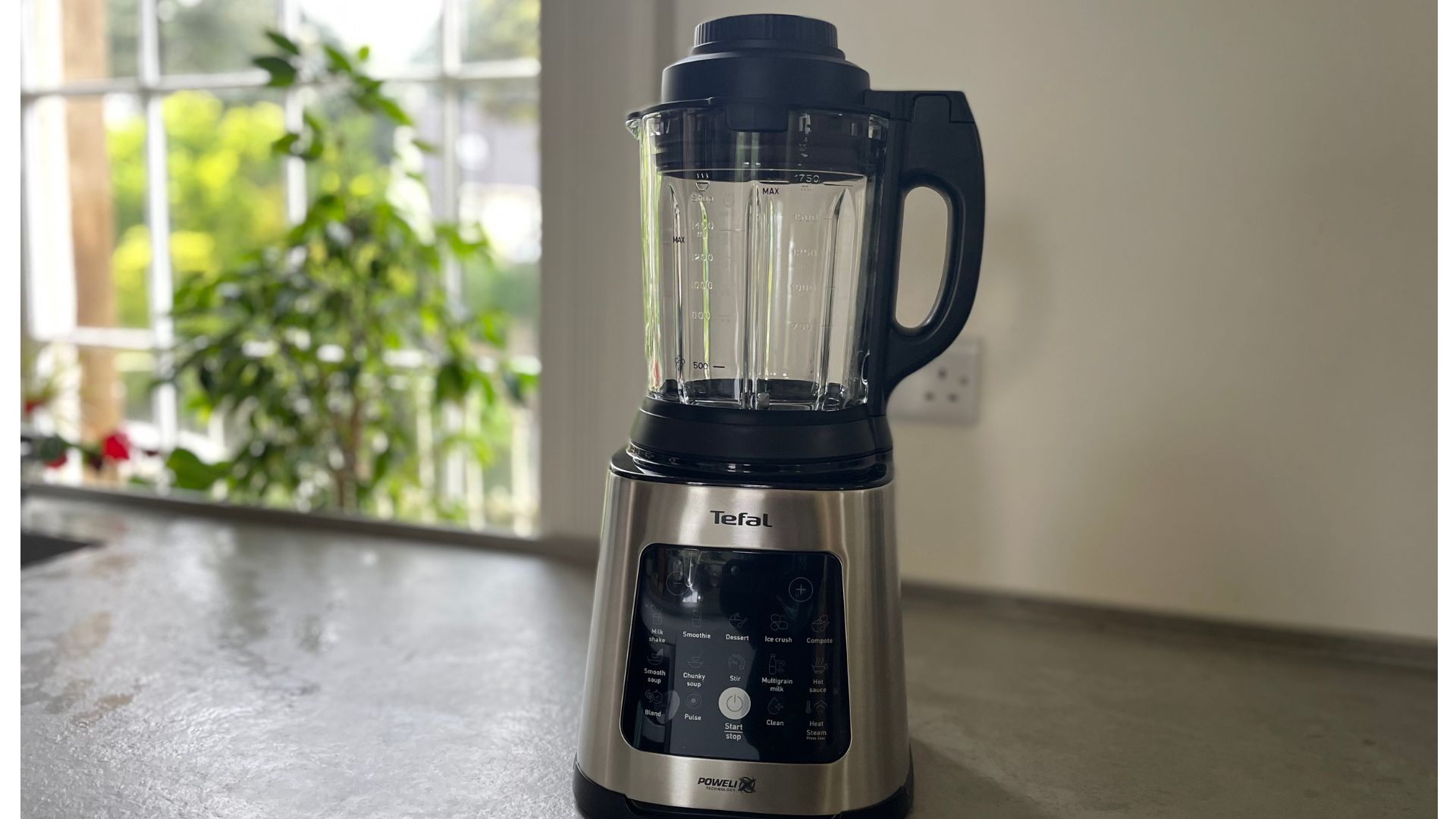
The Tefal Perfectmix Blender is everything the name suggests: it'll make piping hot soup, smooth sorbets, silky smoothies, and incredible dips. I think it's better than Vitamix and Ninja's comparable models. Here's why.
To be considered as one of the best blenders on the market is not an easy task in this day and age. The likes of Ninja, Vitamix, and Nutribullet are innovating their way through just about every function out there. Seemingly out of nowhere, Tefal's blender has appeared on the scene.
Calling it the 'perfectmix' sets expectations high, but, having tested this on smoothies, soups, hummus, and crushed ice, I can assure you that this is nothing short of perfection. It's one of my favourite models on the market - and I've tested over fifty.
Specifications
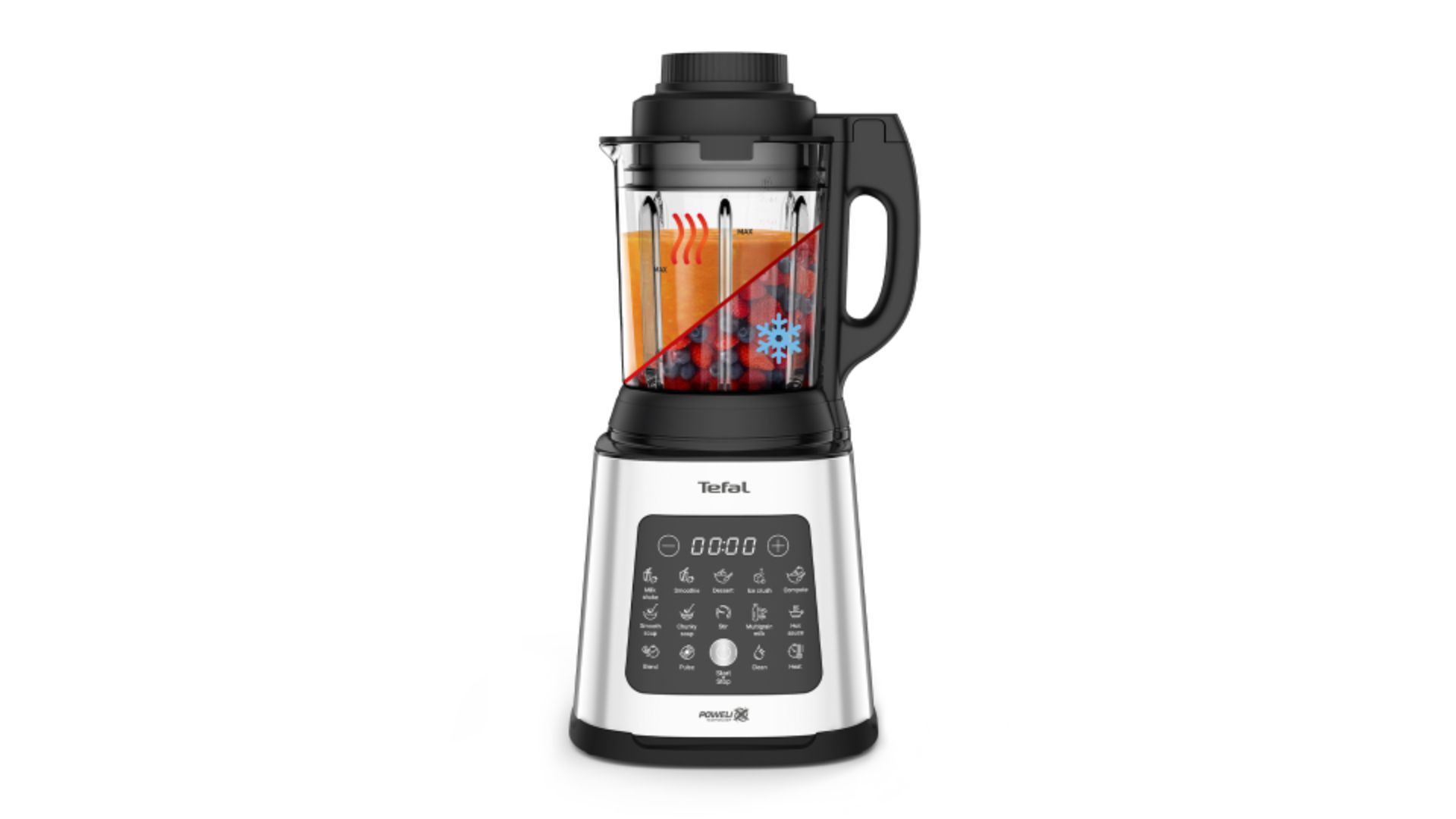
Unboxing and first impressions
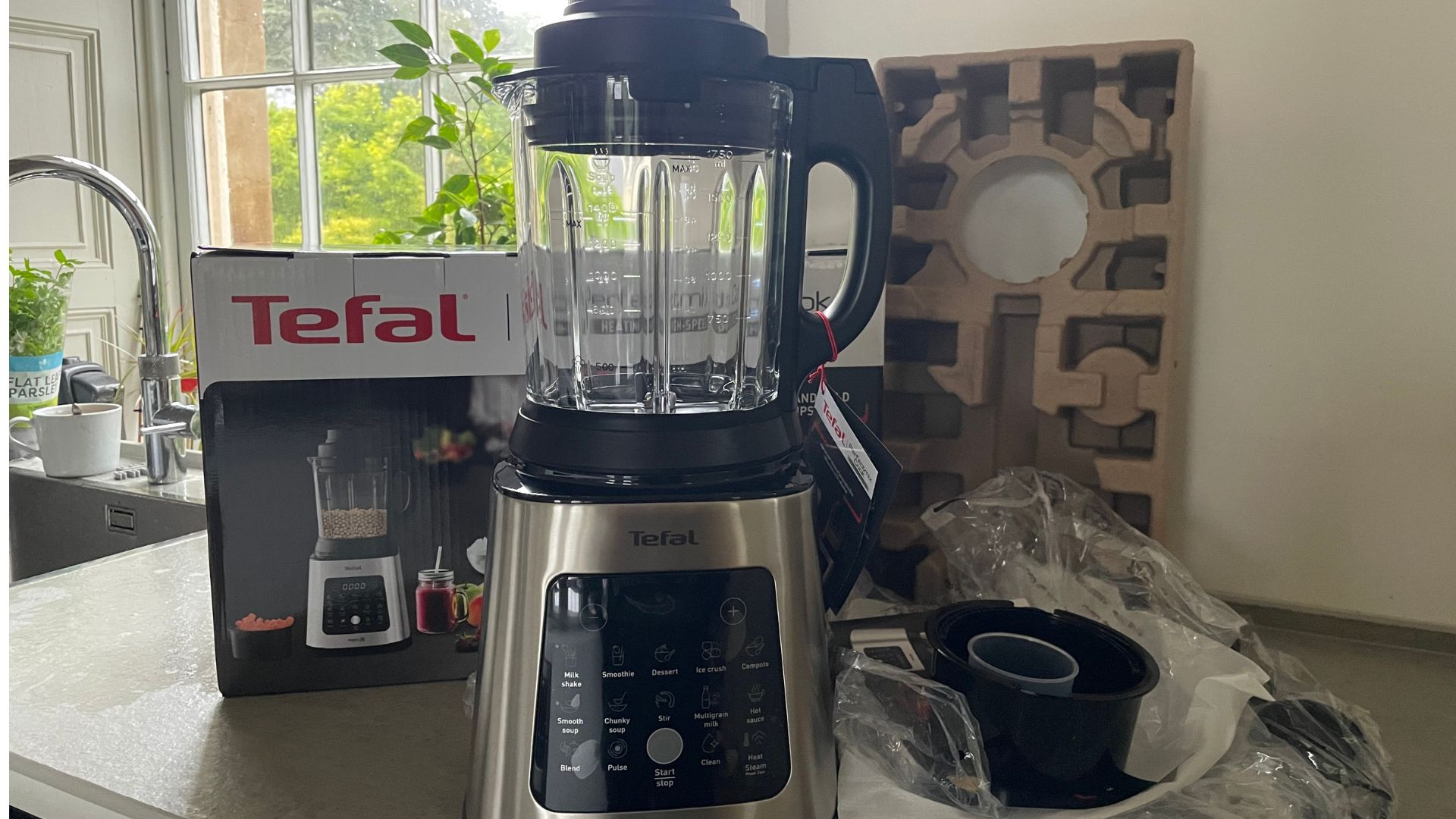
The Tefal Perfectmix comes in a relatively heavy cardboard box. Inside, you'll find the hefty base, glass jug, tamper, and some other cleaning accessories. The box and most of the packaging is recyclable, which is always great news (both for my bins and the environment). There are some soft plastics, but these are relatively easy to recycle at large supermarkets if you make the effort.
Whilst the Tefal Perfectmix is tall, it just fitted under my wall cabinets on test. I'd make sure to measure yours, because it was a tight squeeze for me. The style is quite a practical one and, whilst this isn't ugly, there are certainly more attractive options on the market.
Who would it suit?
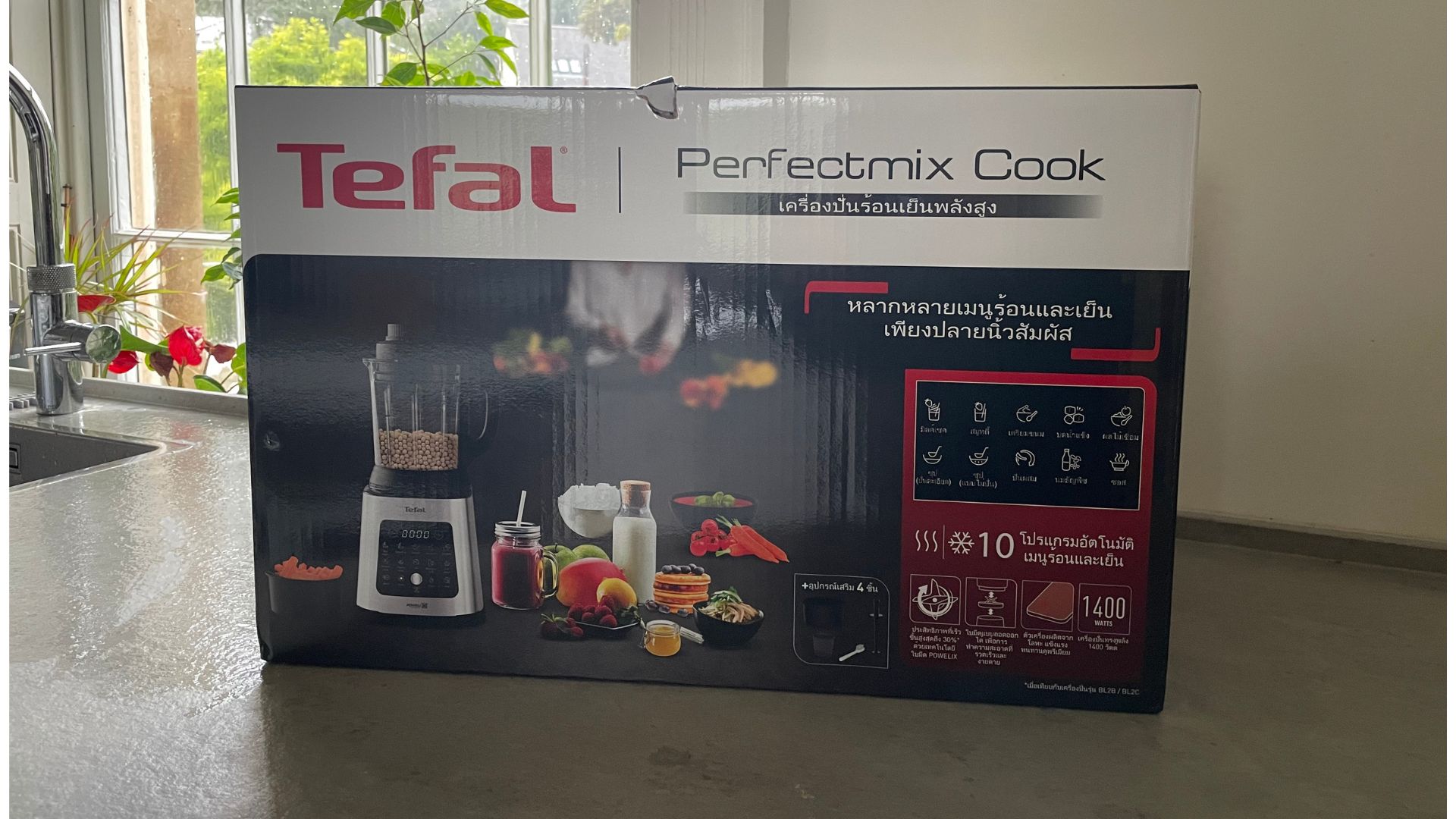
The Tefal Perfectmix is ideal if you're busy, but you want to make some healthier choices at home. The versatile range of pre-sets means that you can make your own piping hot soup in half an hour: you can put all of your ingredients in raw and the Tefal will do the chop, simmer, saute, blend, and heat until you get a smooth or chunky soup. You get to decide which. It's the same story for sauces, smoothies, dips, ice creams, milkshakes and more. This will become the next sous chef in your kitchen. In mine, it got a promotion to head chef within a day. It really is that good.
What's really impressive about the Tefal Perfectmix is that it doesn't cost a fortune. The RRP is currently under £150, which is a steal for any blender, let alone one that can heat soup too. I have to say, I'm struggling to marry up the price tag with the Tefal Perfectmix, because it doesn't feel like they've skimped anywhere. The blending jug is crafted from a thick glass, the base feels heavy and durable, and the performance is impressive too.
The only downside of the Tefal Perfectmix, aside from the fact that it's heavy, is that it can't be submerged in water which makes cleaning up the most fiddly part of the whole process. If you know you'll get frustrated by that, or you simply don't need the versatility of the Tefal Perfectmix, there are lighter, prettier, options on the market.
What is it like to use?
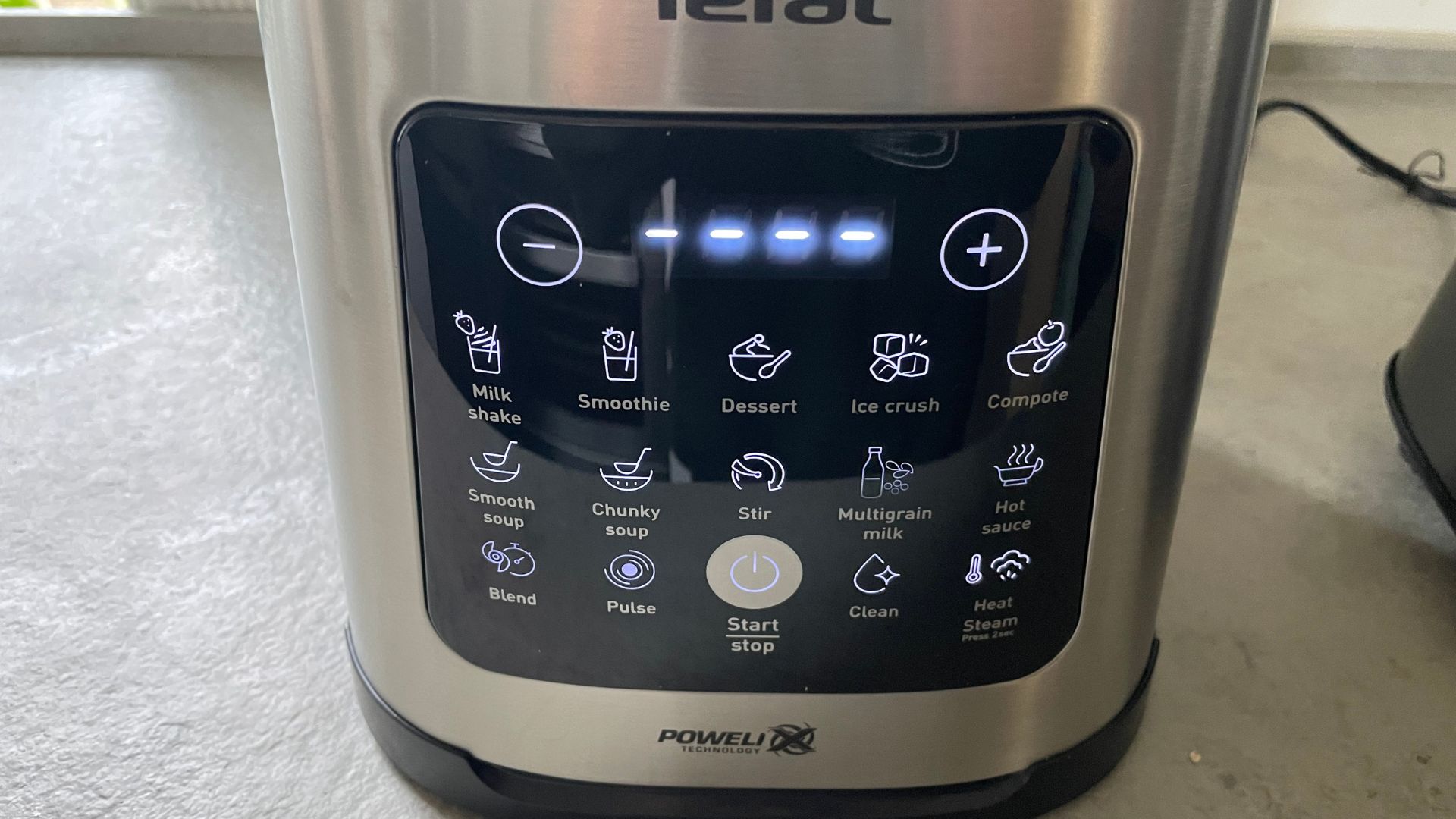
Plugging in the Tefal Perfectmix, the base will light up. Even when it's off you can see the menu of options on offer to you. I have a few standard tests that I put every blender through, because that makes it easier to compare between each model: making a smoothie, some hummus, crushed ice, and a soup (if possible). Here's how the Tefal fared.
Test 1: smoothies and protein shakes
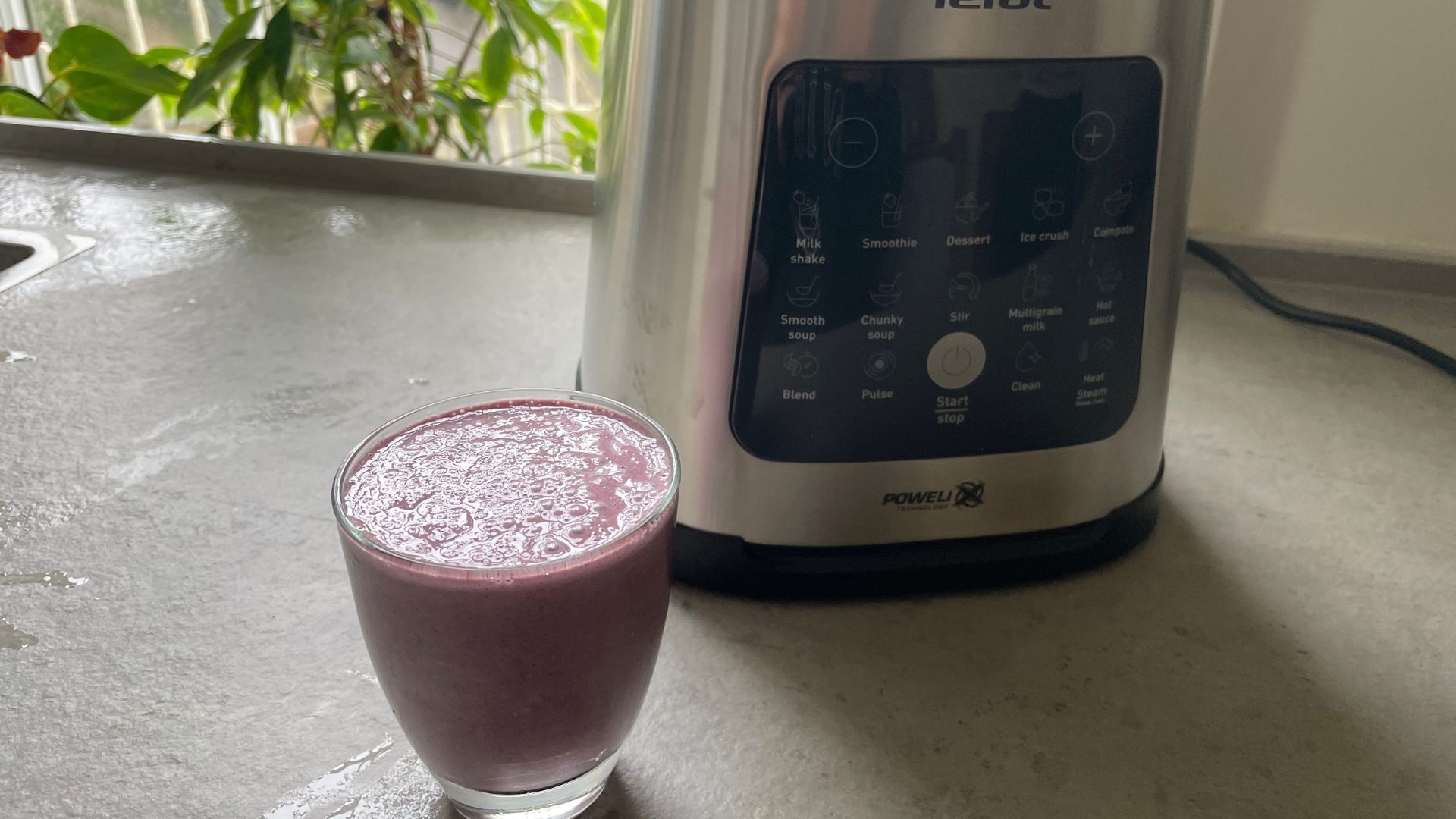
If your blender can't make a decent smoothie, then it's good for nothing. That's why it's the first test that I run every model though. I try to add some challenges into the mix, so I normally make a smoothie from frozen berries (these are hard as ice, with seeds and tough fruit skins), spinach (leafy greens are difficult to conceal in a drink), oats (the fibre can be hard to break down) and then I'll throw in some banana and almond milk.
The smoothie preset reckoned that the Tefal needed two minutes to make the perfect drink, which is about average for a blender of this size. I set it running and watched as everything was whizzed into a silky drink. In reality, this only really needed a minute and, it was pretty loud too (I recorded 72 dB max), but I let it run through the whole pre-set. My resulting smoothie was one of the smoothest that I've ever had. It was better than any smoothie bar or special brand's bottle. I loved it.
To add an extra layer to this test, I'll also add a scoop of protein powder. Not just to test how well this could make a protein shake, but also to see what it would be like at making a batter in the blender. Some models leave lumps of flour in the mix, but the Tefal effortlessly integrated this into the drink. There wasn't a lump, glob, grain, seed, or skin in sight.
Test 2: soup
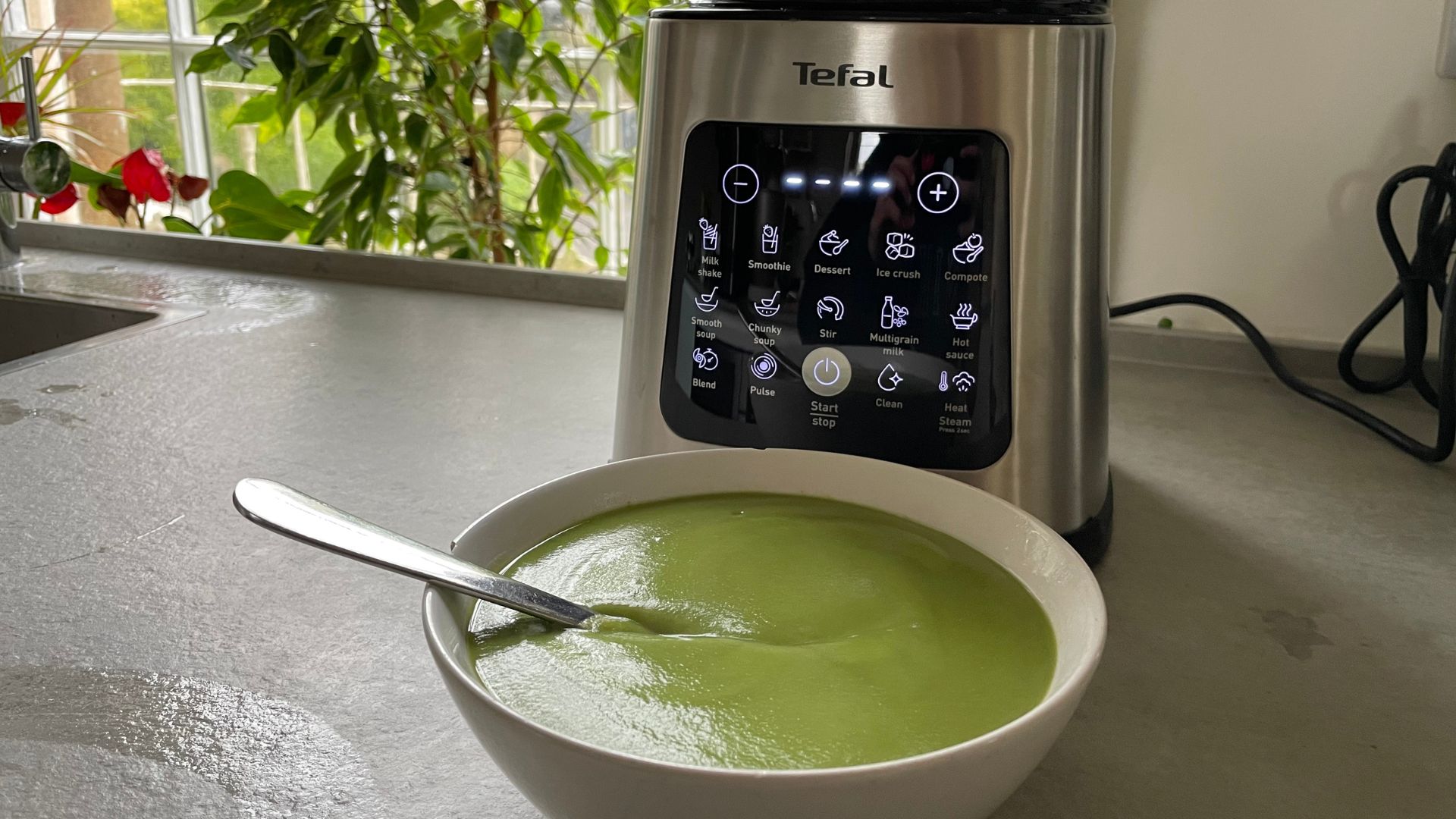
I always test the soup function on a blender if it's offered, because it ends up being one of the most useful and popular options on a blender menu. I tested out a recipe for pea and mint soup, adding frozen peas, garlic, mint, and onion into the blender. I didn't chop the onion and garlic, I just peeled them. Then, I set the Tefal running on the smooth soup setting.
The noise of it either boiling or blending my ingredients faded into the background, so I almost forgot that the Tefal was busy working away. When I heard the beep alerting me that the soup was ready, I rushed over to pour it out. The texture was completely faultless. I haven't made a smoother soup. Ever. The flavours were good too, nothing had been over or under boiled either. My only frustration was that this came out so hot that I couldn't eat it straight away. The first sip burnt my mouth, so I had to wait for a few minutes before tucking in.
I've since made chunky soups, carrot soups, tomato soups, and a whole host of other recipes using the soup function and they've all been incredible. This is one of the best features offered by the Tefal Perfectmix.
Test 3: hummus and dips
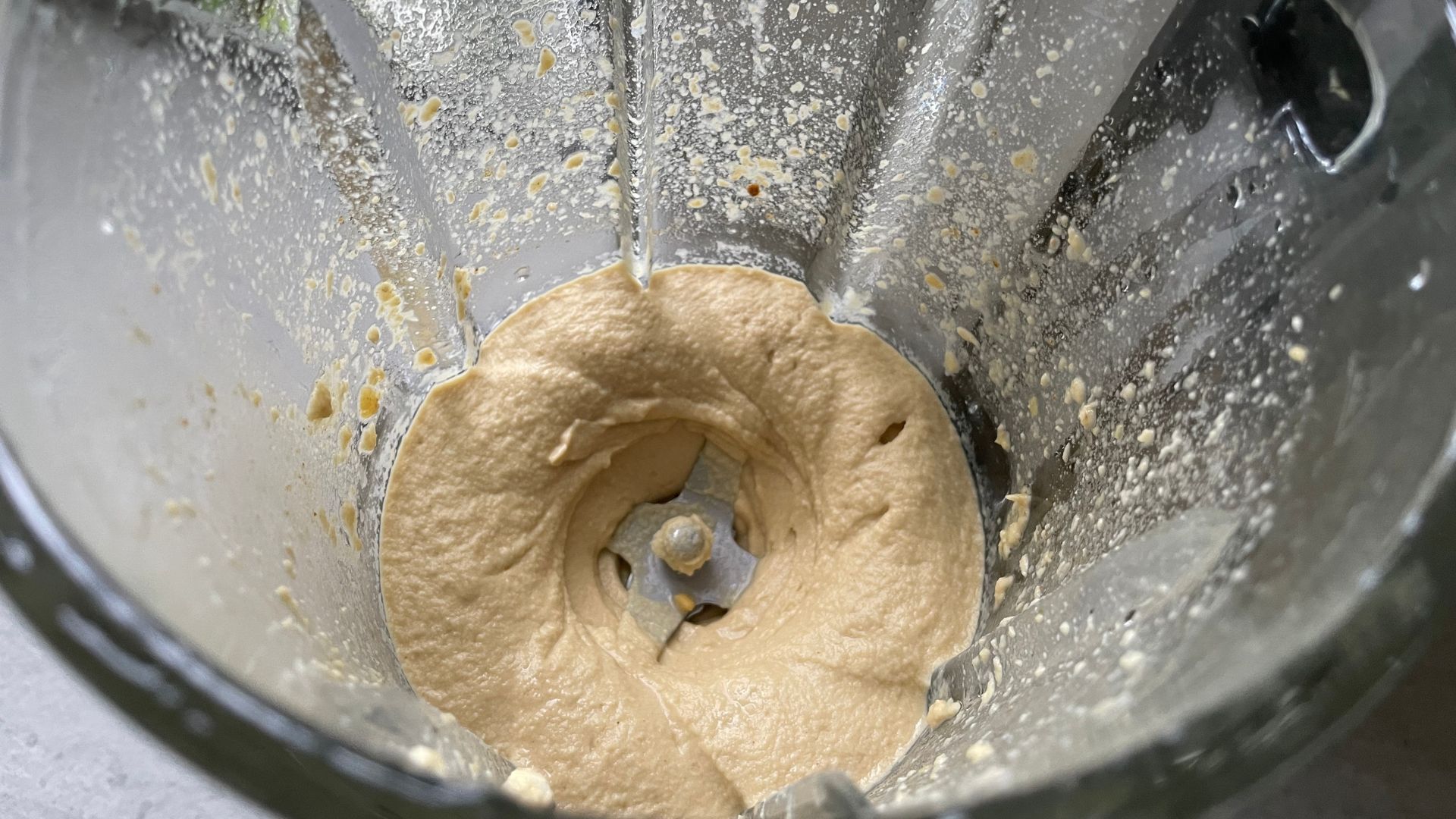
I always move on to a dip test, normally hummus. This is because the liquid content is much lower, which makes it harder for any blender to do a really thorough job of making a smooth hummus. Given the power of the Tefal Perfectmix on my other tests, I had hopes that this would be a success.
I added one can of chickpeas, a teaspoon of tahini, a squeeze of lemon, some salt, and olive oil to the blender and then used the manual blend setting to get things running. Within a minute, I could stop the blender and relax. This hummus was incredibly smooth. I actually finished the whole bowl (with some help from some other people in the kitchen) as soon as it was made and then had to make another for testing. That was finished pretty quickly too. It was the most velvety hummus I've ever had, and I had a Greek friend in the kitchen who agreed.
Test 4: crushing ice
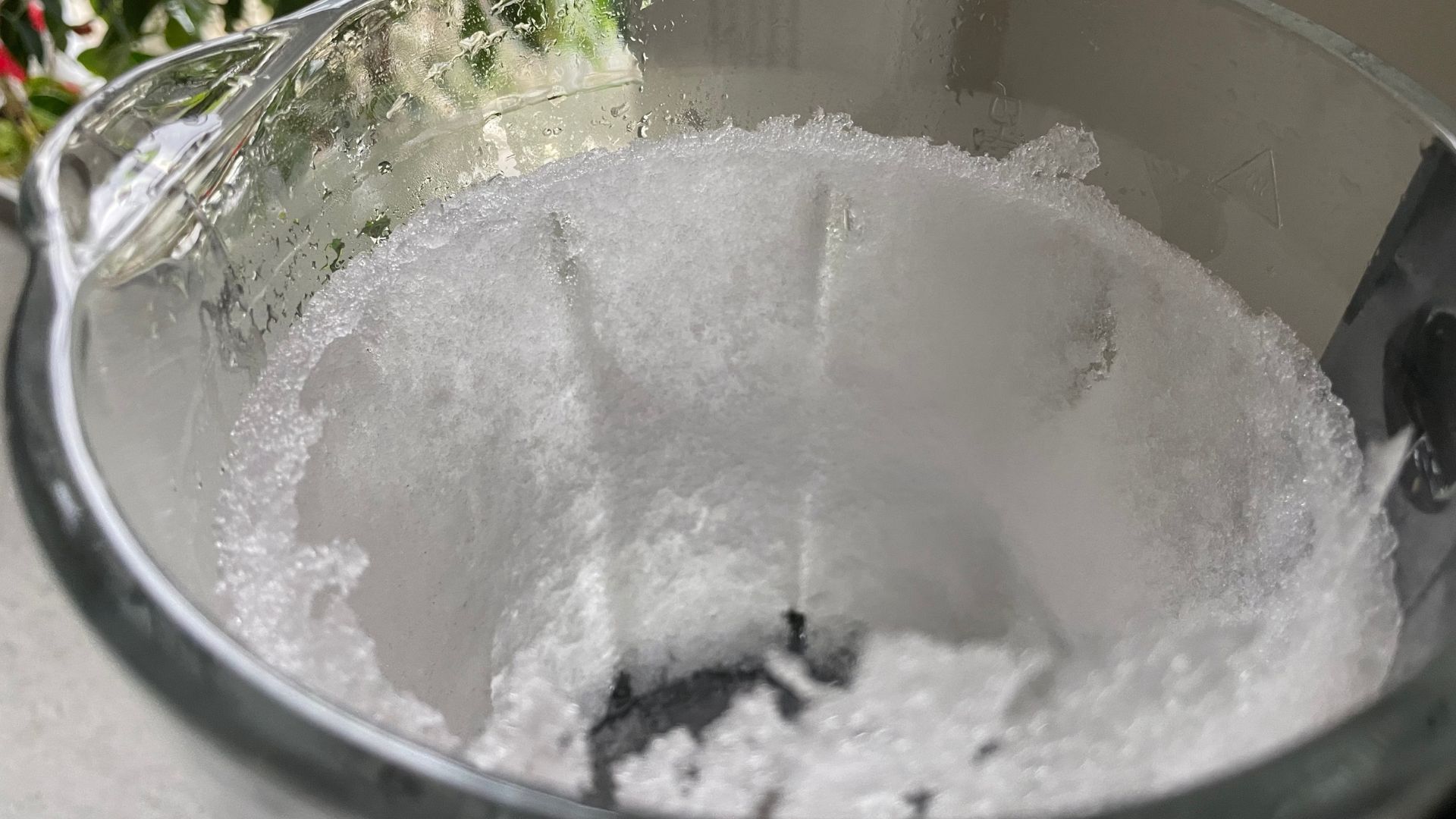
Crushing ice is normally where blenders trip up, but this is a powerful model. I tested lots of different amounts of ice, from just a handful right through to a pitcher full. Every time, the Tefal Perfectmix misted the ice cubes instantly. Normally, I have to add a splash of water or give the blender a shake to help it along. In this case, the Tefal was fine without any aids. It's a do-it-all appliance.
Cleaning
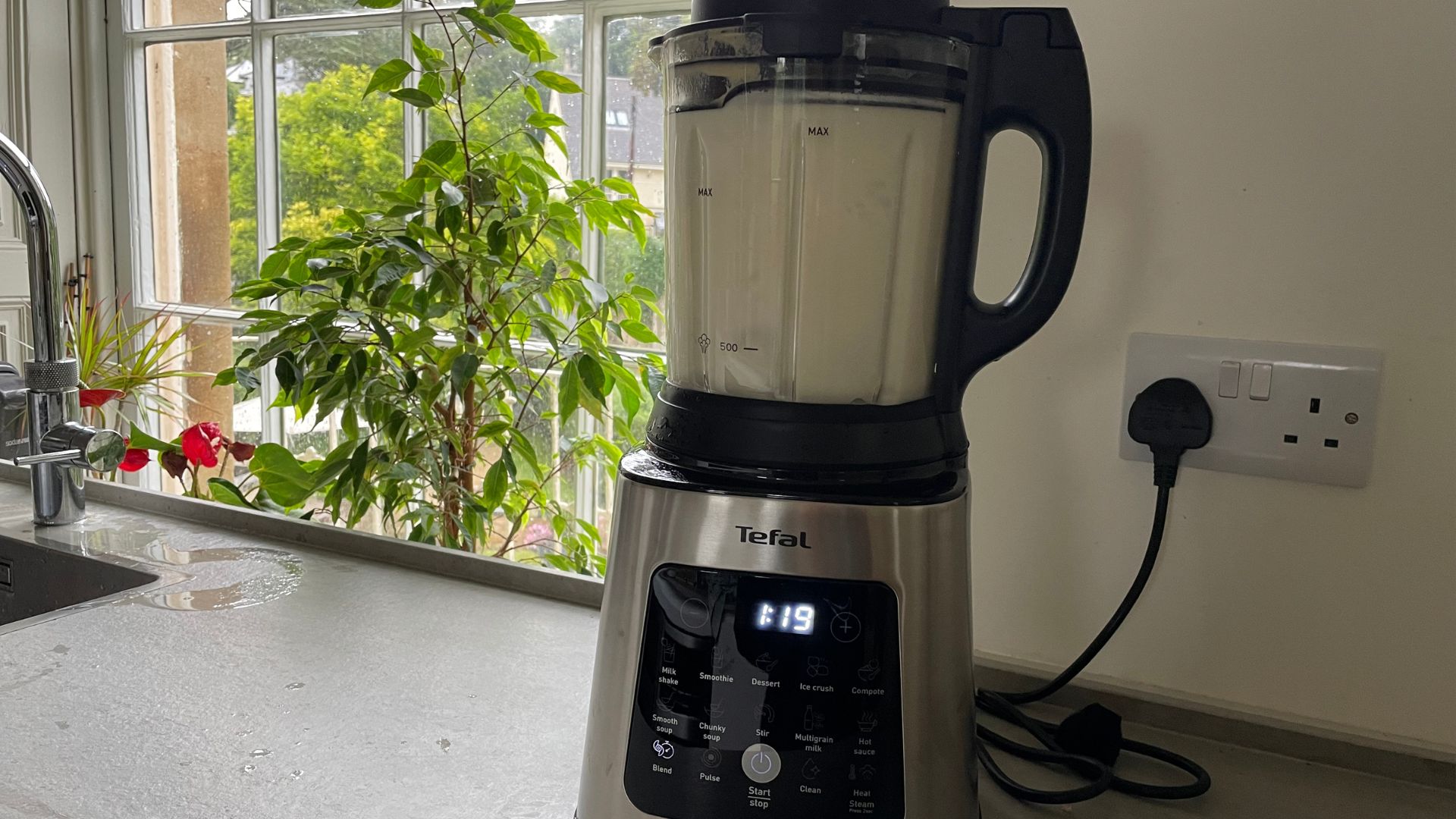
Now we come to my least favourite part of the experience. The Tefal Perfectmix is brilliant in every aspect, but, because of the heating element, the jug can't be submerged in water. This means that you have to fill it with water, add a squeeze of washing-up liquid, and set it running on the clean function. This takes fifteen minutes of heating and blending, but it will leave your pitcher clean on the inside. The outside might need a wipe-down too, but you need to be careful not to get the element wet.
How does it compare?
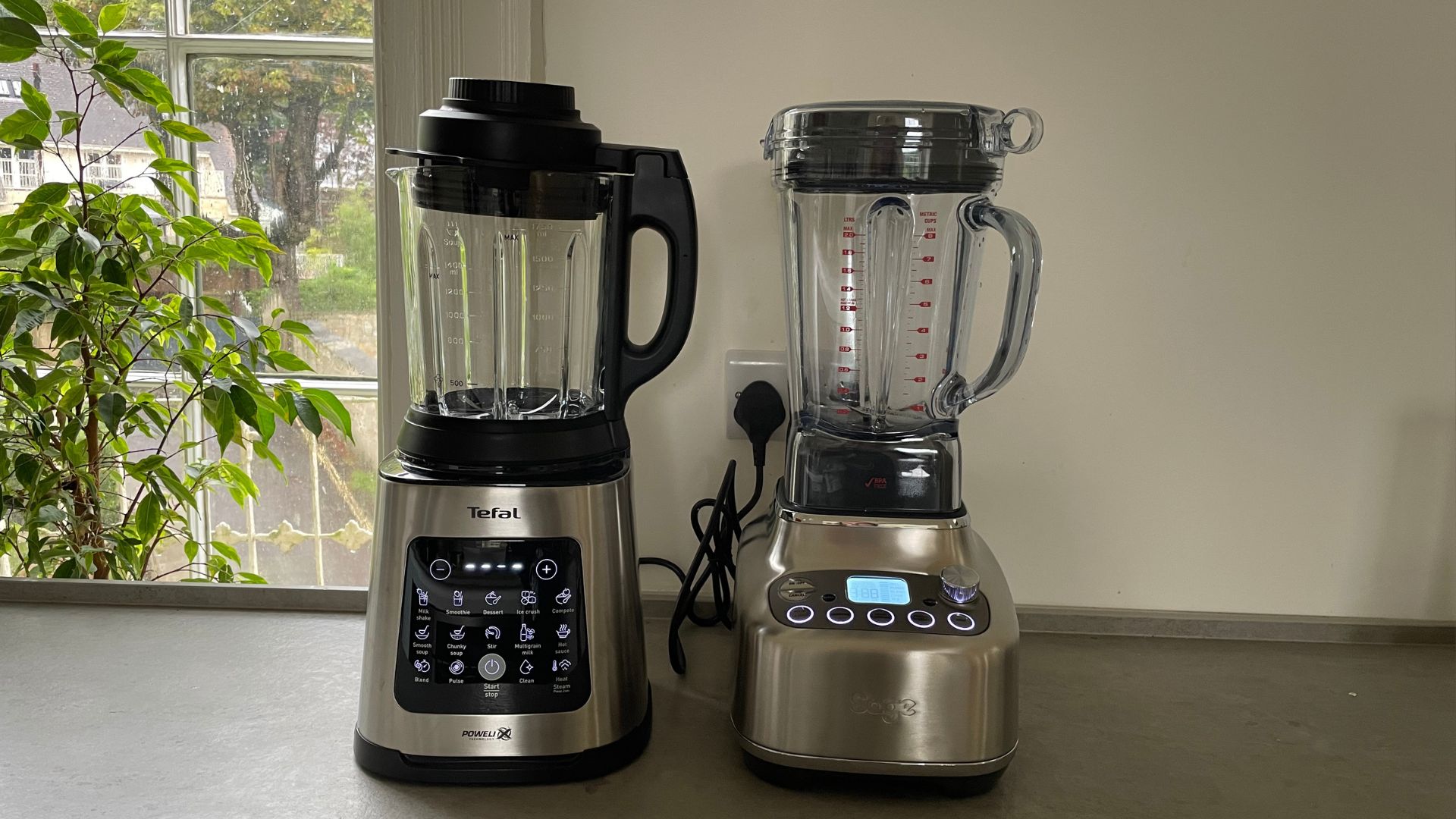
There are more and more soup-making blenders creeping onto the market: Sage the Super Q (£200); Ninja Foodi Hot & Cold Blender (£130), and the Braun Powerblend 9 (£200). Rather surprisingly, this is one of the cheaper options, but it's still one of the best. In fact, having lived with all of these in my kitchen, I found myself reaching for the Tefal more than any other. The Sage one is more beautiful; the Ninja is quicker; and the Braun is the easiest to clean, but the results I achieved in the Tefal.
The jug feels as thick and premium as the most expensive Sage model, the controls are the most versatile on the Tefal, and it blended ice in seconds. Naturally, if you wanted a better looking model, the Sage would be perfect. Similarly, the Ninja makes soup ten minutes faster, but I wouldn't sacrifice either of those for anything instead of the Tefal. Can you tell I'm hooked?
Should you buy it?
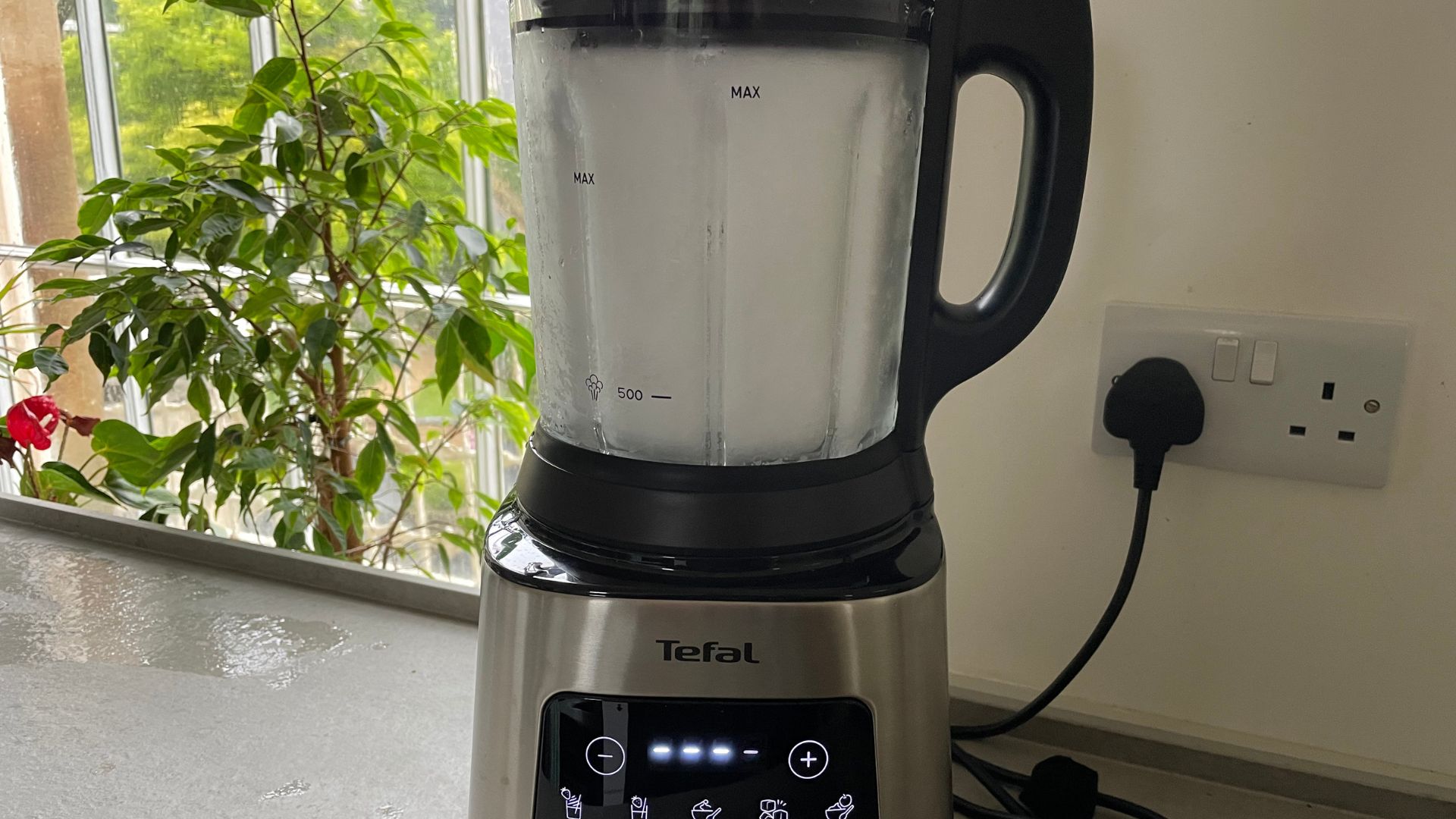
I thought I'd seen it all for soup-making blenders, but the Tefal is something else. I write for a living and I'm not sure that my words can even do justice to how smooth and silky the soups, smoothies, and hummus dishes were. It's perfect for beginners or people who want to cook at home without the hassle. There's no reason not to invest in this.
How we test
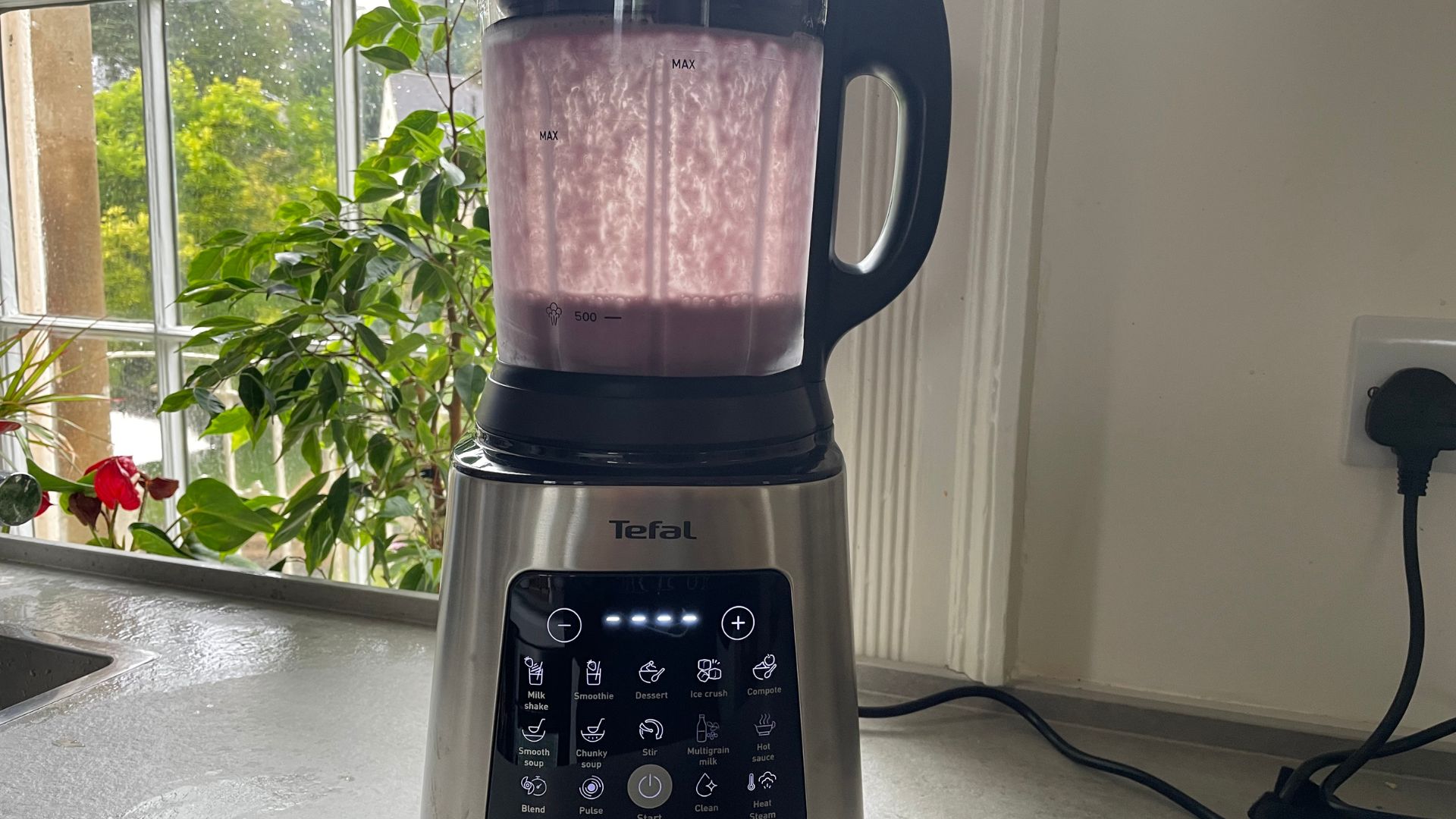
At woman&home, how we test blenders is a rigorous process. I have three standard tests that I put every single blender that we recommend through. The first is making a smoothie. This is a basic function that every blender should whizz through, so I make sure that we have it covered. I use frozen fruit, because this is not only icy and tough, but also seedy. I also add spinach and oats, because they're also fibrous and difficult to chop through. If my blender can break that down into a delicious drink, it's a wonderful success.
The next test is on hummus. This has a lower water content, so plenty of blenders struggle more to get super smooth results. It's not a recipe you'll use daily, but this test is great for assessing how well your blender will be able to handle thicker tasks, from smoothie bowls to pastes.
The final test is on ice. These are really hard to mist into crystals, but some blenders can do it. I always make sure to put blenders through this test, even though lots of them fail.
If a blender has other functions, I'll test them too. In the case of the Braun, I made soup using the soup function, but some models have ice cream and milkshake settings too. Whilst I'm running all of these tests, I'll also look at how noisy the blender is, how easy it is to use, what it looks like, and how it compares to the other models I've tested.
I'll give you an in-depth breakdown of where it sits on the blending market, whilst assessing whether it's good value for money and suitable for you and your kitchen. After all that, I come to a conclusion on whether you should buy it. By this time, you should have a comprehensive idea of exactly what this would be like to use.
I don't sugar coat anything, because I want to make sure that you spend your money wisely. If there's a better blender out there, you'll know about it. The place to always start looking is in our best blenders buying guide, because that's where I put my favourites.







